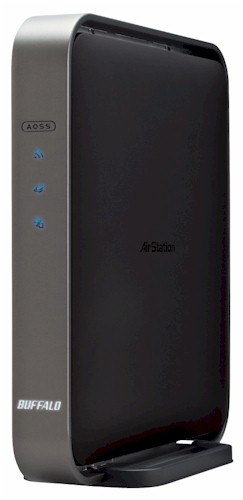
| At a glance | |
|---|---|
| Product | Buffalo Technology AirStation AC1300 / N900 Gigabit Dual Band Wireless Router (WZR-D1800H) [Website] |
| Summary | First-to-market Draft 2.0 802.11ac router based on Broadcom chipset |
| Pros | • Can get ~ 450 Mbps total throughput in 80 MHz draft AC mode • Built in PPTP server • NAS feature supports DLNA and Torrent downloads |
| Cons | • Moderate single client throughput gain from draft 11ac • No guest SSID • No WDS or client mode bridging • Basic routing feature set |
Typical Price: $180 Buy From Amazon
Wireless Performance – Overview
With the feature review, routing performance, file sharing performance and initial look at maximum draft 11ac throughput out of the way in Part 1, we now move on to our regular throughput vs. location testing.
First, however, to recap, in Part 1 we found that the Buffalo draft 11ac router / bridge pair was able to pump out increasing throughput as we increased the number of simultaneous IxChariot test scripts. Figure 1 is the graph from Part 1 that summarizes the tests. So, at least at close range, draft 11ac is capable of much higher throughput than previously attainable with even three-stream 802.11n.
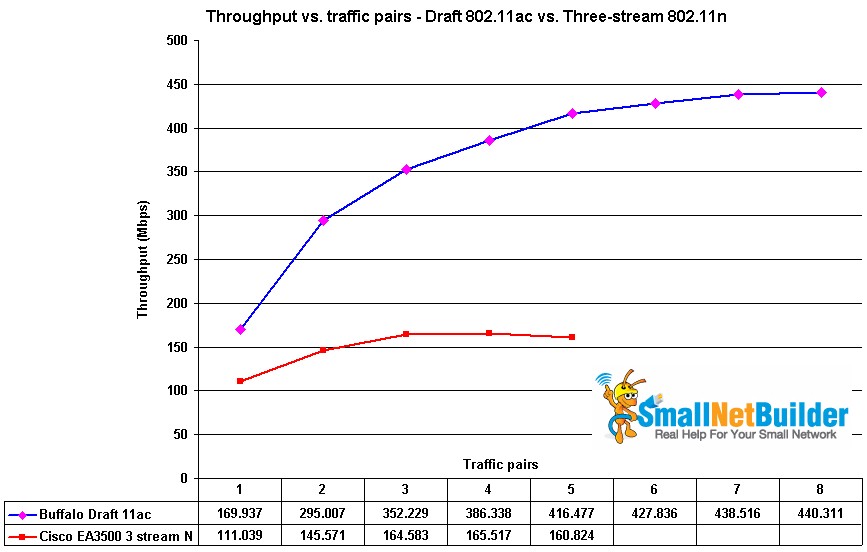
Figure 1: Draft 11ac vs. Three Stream 802.11n throughput vs. traffic pairs
I used our standard test method to test the D1800’s wireless performance. Three-stream testing was done with our standard Intel Centrino Ultimate-N 6300 test client in a Lenovo x220i Thinkpad running Win 7 Home Premium SP1 (64 bit). For two-stream tests on both bands, I used an Intel Centrino Advanced-N 6200 in a Acer Aspire 1810T notebook running Win 7 Home Premium SP1 (64 bit). For the 80 MHz bandwidth mode, 5 GHz band tests, i.e. draft 802.11ac mode, I used a Buffalo WLI-H4-D1300 draft 11ac bridge. Both router and bridge were running their original-release version 1.86 firmware.
As is SNB practice, I set the 2.4 GHz radio to Channel 1 and the 5 GHz radio to Channel 36. All tests were run with WPA2/AES security engaged, which I set by running a WPS pushbutton session.
Each entry in the Benchmark Summary in Figure 2 shows the average of throughput measurements made in all test locations. As I’ve found with previous three-stream tests these averages don’t change much between two and three stream modes until you get multiple simultaneous data streams running with a strong signal.
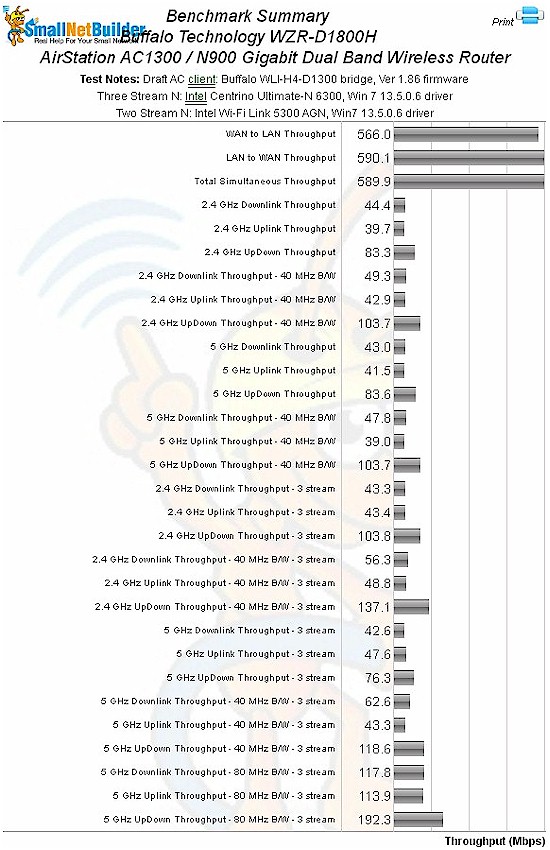
Figure 2: Buffalo WZR-D1800H Benchmark Summary
For example, comparing two and three stream 5 GHz, 40 MHz mode up/down tests shows a 42% gain in average throughput (84 Mbps vs. 119 Mbps), while comparing downlink-only results for the same benchmark actually produces around a 10% throughput loss (48 Mbps vs. 43 Mbps).
But if you look at the last three draft 11ac tests (5 GHz, 80 MHz B/W, 3 stream), the up/down average at 192 Mbps is 61% higher than the 40 MHz mode three-stream N test at 119 Mbps.
Table 1 summarizes the highest wireless throughput measured out of all locations in the 20 MHz mode test runs. In most cases, highest throughput was measured in Location A. Note that the Dn/Up result is for simultaneous up and downlink tests in Location A. This test usually shows higher throughput than unidirectional tests.
| Test Group | Max Dn (Mbps) | Max Up (Mbps) | Dn/Up (Mbps) |
|---|---|---|---|
| 2.4 GHz, 2 stream, 20 MHz | 68 | 57 | 83 |
| 2.4 GHz, 3 stream, 20 MHz | 76 | 73 | 104 |
| 5 GHz, 2 stream, 20 MHz | 66 | 61 | 84 |
| 5 GHz, 3 stream, 20 MHz | 50 | 57 | 76 |
Table 1: Highest Throughput, 20 MHz mode
Something seems off in the 5 GHz results since, in 20 MHz mode, best case three stream throughput is actually lower than two-stream. 5 GHz 40 MHz mode results in Table 2 are better and go in the right direction for three-stream vs. two. But the 14% gain between two and three stream down/up tests is nothing to write home about.
For 40 MHz bandwidth modes, the two-to-three stream performance gain shown in Table 2 is more significant—between 30 and 60%!
| Test Group | Max Dn (Mbps) | Max Up (Mbps) | Dn/Up (Mbps) |
|---|---|---|---|
| 2.4 GHz, 2 stream, 40 MHz | 76 | 71 | 104 |
| 2.4 GHz, 3 stream, 40 MHz | 98 | 79 | 104 |
| 5 GHz, 2 stream, 40 MHz | 78 | 75 | 104 |
| 5 GHz, 3 stream, 40 MHz | 85 | 80 | 119 |
Table 2: Highest Throughput, 40 MHz mode
Table3 calls out the draft 11ac best case throughputs, which are at least 56% higher for downlink, 65% higher for uplink and 61% higher for up/down. Now we’re talkin’!
| Test Group | Max Dn (Mbps) | Max Up (Mbps) | Dn/Up (Mbps) |
|---|---|---|---|
| 5 GHz, 3 stream, 80 MHz | 133 | 132 | 192 |
Table 3: Highest Throughput, 80 MHz mode
Wireless Performance – 2.4 GHz Two Stream N
For performance comparison, I chose three dual-band three-stream "N900" routers: ASUS RT-N66U; NETGEAR WNDR4500 and Cisco Linksys E4200V2.
The comparison tables are large, so I’m going to provide links that will open them in a new window/tab to make things easier. Let’s start with the Performance Table for Two-stream 2.4 GHz. Given that the ASUS wins three out of four benchmarks, I’d have to declare it the winner for two-stream 2.4 GHz performance in this comparison.
The IxChariot plot summary in Figure 3 for 20 MHz mode downlink shows generally stable throughput. But the 4-5 second dropouts in the Location D and F tests are troubling. I reran the tests a few times to see if this was a fluke and, unfortunately, it was not.
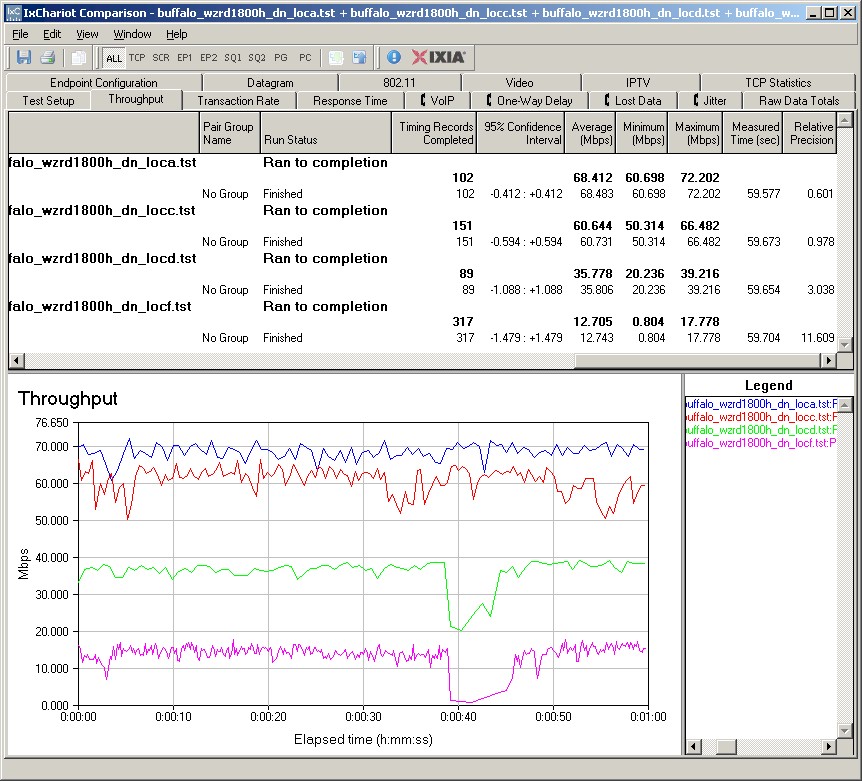
Figure 3: Buffalo WZR-D1800H IxChariot plot summary – 2.4 GHz, 20 MHz mode, downlink, 2 stream
Fortunately, I didn’t see similar behavior during the other test runs linked below.
- 2.4 GHz / 20 MHz uplink
- 2.4 GHz / 20 MHz up and downlink
- 2.4 GHz / 40 MHz downlink
- 2.4 GHz / 40 MHz uplink
- 2.4 GHz / 40 MHz up and downlink
Wireless Performance – 2.4 GHz, Three Stream N
Next, we’ll look at the Performance Table for Three-stream 2.4 GHz. The ASUS "Dark Knight" clearly sweeps this comparison. The only place where the Buffalo comes close is in 40 MHz mode, downlink. The ASUS’ 20 Mbps range downlink throughput in Location F in both 20 and 40 MHz bandwidth modes is very impressive, with no other product even coming close.
The IxChariot plot in Figure 4 shows that it took the D1800H and its client almost 15 seconds to decide to switch up to its steady-state 80 Mbps throughput in the Location A trace. Again, repeated runs revealed similar behavior.
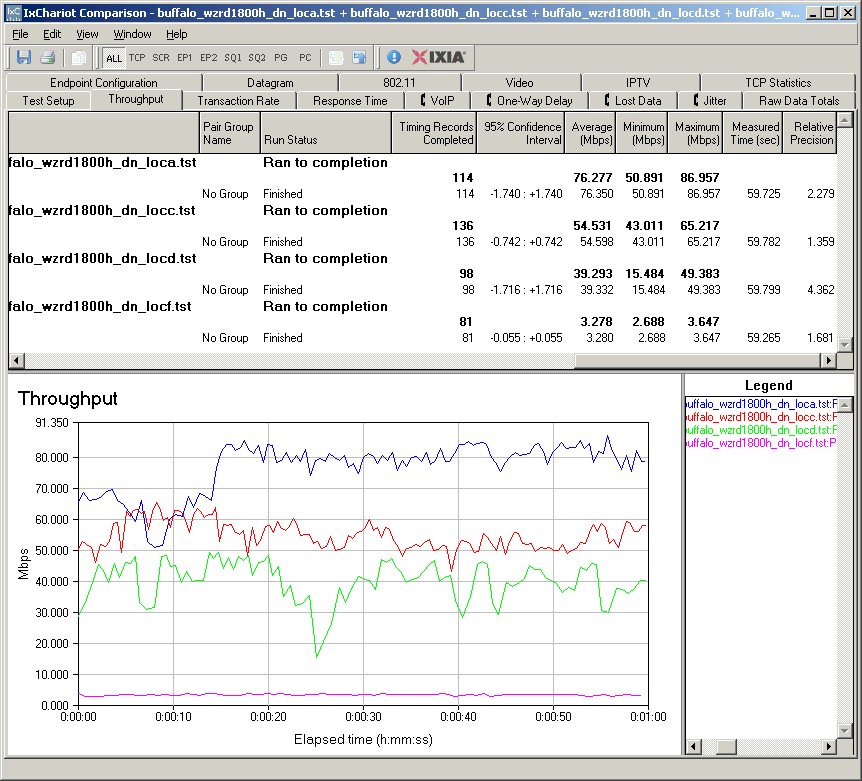
Figure 4: Buffalo WZR-D1800H IxChariot plot summary – 2.4 GHz, 20 MHz mode, downlink, 3 stream
Fortunately, you won’t see a repeat of this behavior in any of the other plots linked below.
- 2.4 GHz / 20 MHz uplink
- 2.4 GHz / 20 MHz up and downlink
- 2.4 GHz / 40 MHz downlink
- 2.4 GHz / 40 MHz uplink
- 2.4 GHz / 40 MHz up and downlink
Wireless Performance – 5 GHz Two Stream N
Next, we’ll look at the Performance Table for Two-stream 5 GHz. After running tests in the same room (test Location A), I moved the bridge to Locations C and D. Then, just for yuks, I tried my toughest test Location F, even though I didn’t expect to get a detectable signal there.
I was initially shocked to get a link and even throughput around 50 Mbps! But then I noticed that the bridge had switched over to connect to the router’s 2.4 GHz radio. After shutting off the D1800H’s 2.4 GHz radio, the bridge in Location F was still able to see the router. But signal quality wasn’t good enough for the bridge and router to successfully associate and run the test.
A glance at the performance table linked above shows the ASUS once again taking three out of four comparisons. The Buffalo doesn’t seem particularly strong in any of the four benchmarks compared here.
The IxChariot plot in Figure 5 shows regular and high throughput variation in the weaker signal Location C and D runs.
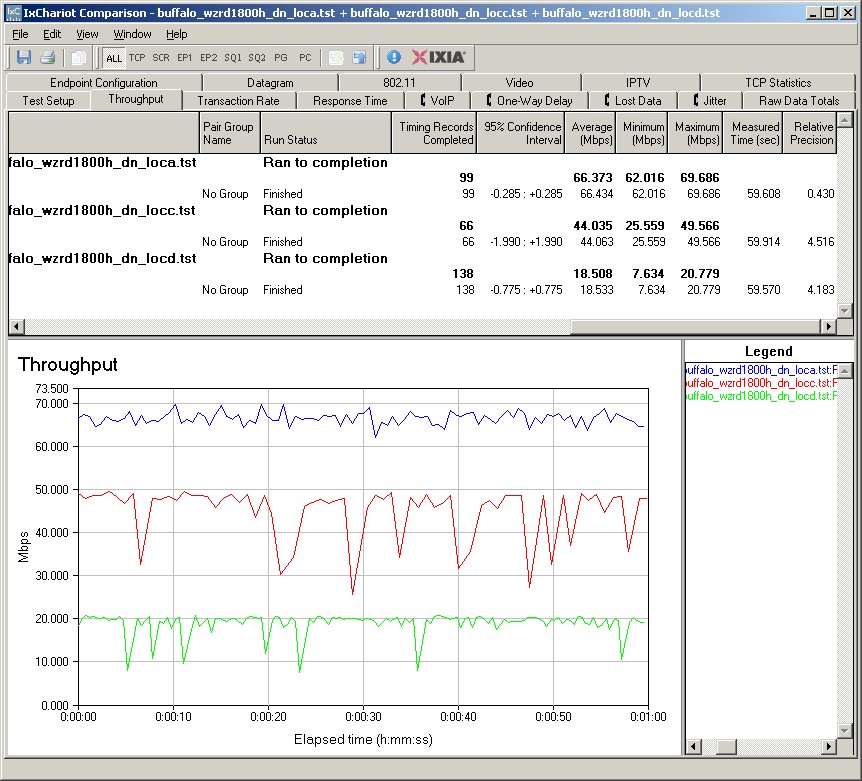
Figure 5: Buffalo WZR-D1800H IxChariot plot summary – 5 GHz, 20 MHz mode, downlink, 2 stream
Clicking through the other plots below will show similar throughput anomalies that indicate that two-stream 5 GHz isn’t one of the D1800H’s more robust modes.
- 5 GHz / 20 MHz uplink
- 5 GHz / 20 MHz up and downlink
- 5 GHz / 40 MHz downlink
- 5 GHz / 40 MHz uplink
- 5 GHz / 40 MHz up and downlink
Wireless Performance – 5 GHz Three Stream N
For the three-stream N 5 GHz test runs, I set the WZR-D1800H to Channel 36 and used its 11n/a Normal Mode (20MHz) mode for the 20 MHz mode tests and its 11n/a 450 Mbps Mode (40MHz) for the 40 MHz tests. I also could have used the 11ac/n/a 1300 Mbps Mode (80 MHz) mode for the 40 MHz mode tests with my three-stream N client. Since the Intel 6300 client doesn’t know how to speak draft 11ac, the D1800H looks like a standard "N900" router to it.
I confirmed this by setting the router to the 80 MHz mode and running a quick IxChariot test, while monitoring spectrum with the Wi-Spy dBx. The Wi-Spy showed only Channels 36 and 40 in use, i.e. 40 MHz of bandwidth and Win 7’s Wireless Network Connection Status showed a 450 Mbps link rate. Like three-stream N before it, a draft 11ac router offers no performance advantage to non 11ac clients.
The Performance Table for Three-stream 5 GHz shows exceptionally strong throughput for the ASUS "Dark Knight" running uplink in both 20 and 40 MHz modes.
The D1800H’s strongest showing is in downlink, 40 MHz bandwidth mode. But it wasn’t strong enough to beat the NETGEAR WNDR4500.
The IxChariot plot in Figure 6 again shows high throughput variation, which you’ll also see in most of the other benchmark plots.
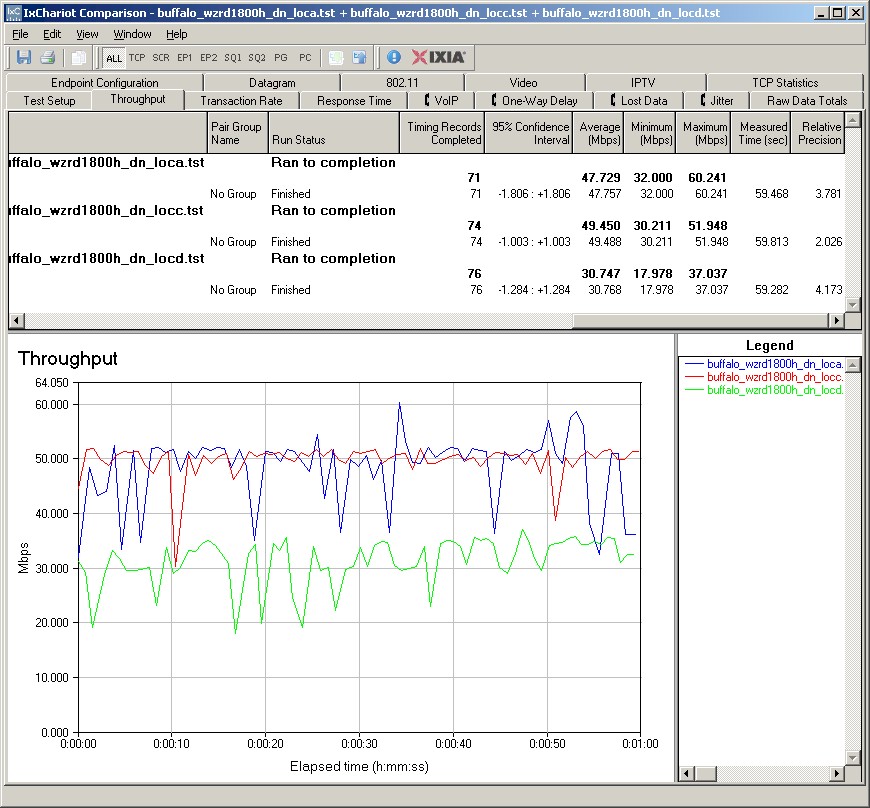
Figure 6: Buffalo WZR-D1800H IxChariot plot summary – 5 GHz, 20 MHz mode, downlink, 3 stream
- 5 GHz / 20 MHz uplink
- 5 GHz / 20 MHz up and downlink
- 5 GHz / 40 MHz downlink
- 5 GHz / 40 MHz uplink
- 5 GHz / 40 MHz up and downlink
Wireless Performance – 5 GHz – Draft 11ac
We finally reach the draft 11ac tests. For these, I paired the D1800H with a Buffalo WLI-H4-D1300 draft 11ac bridge and set the router to its 11ac/n/a 1300 Mbps Mode (80 MHz) on Channel 36. Since there are no other draft 11ac products to compare, the Performance Table in Figure 7 is pretty compact.
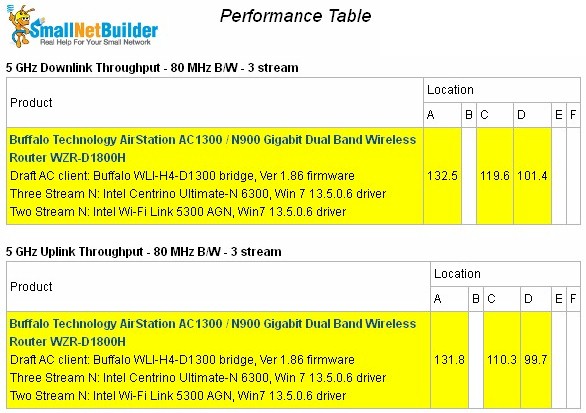
Figure 7: Buffalo WZR-D1800H Performance Table – 5 GHz, 80 MHz (draft 11ac)
The tests show that the throughput of the D1800H / D1300 Buffalo pair hold up pretty well over range. While the data doesn’t really show it, because I don’t have other intermediate test points, 5 GHz draft 11ac seems similar to 802.11n in that throughput falls off pretty drastically once signal levels drop enough.
To see whether the throughput vs. range curves varied among modes, I created the plots in Figures 8 and 9. The 80 MHz draft 11ac mode curve seems the most linear and runs roughly parallel to the 40 MHz mode curve.
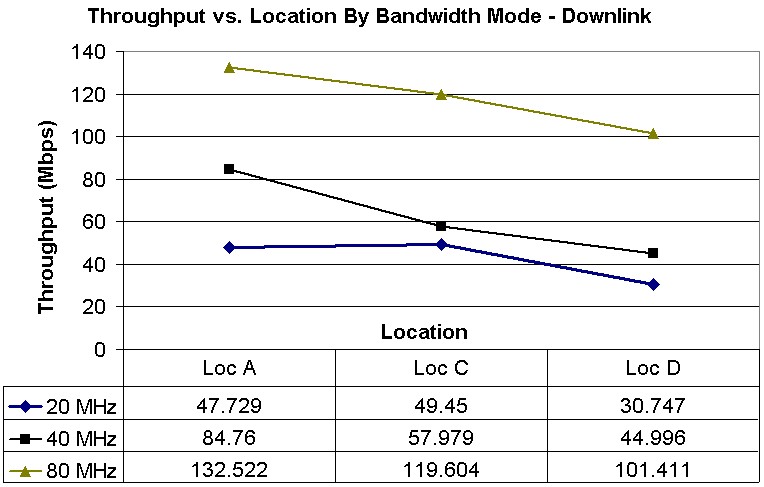
Figure 8: Buffalo WZR-D18008 throughupt vs. location by bandwidth mode – downlink
Figure 9 shows uplink results, with 40 MHz mode taking a big jog downward in 40 MHz mode.
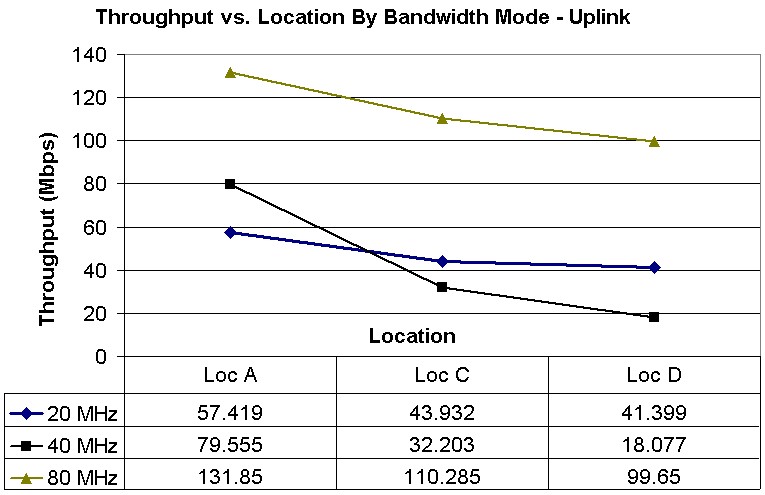
Figure 9: Buffalo WZR-D18008 throughupt vs. location by bandwidth mode – uplink
How stable is the 80 MHz mode throughput? The IxChariot plot summary in Figure 10 shows that it’s not bad…if you don’t mind occasional very large throughput dropouts. It’s interesting that the dropouts didn’t appear in the lowest signal level test in Location D.
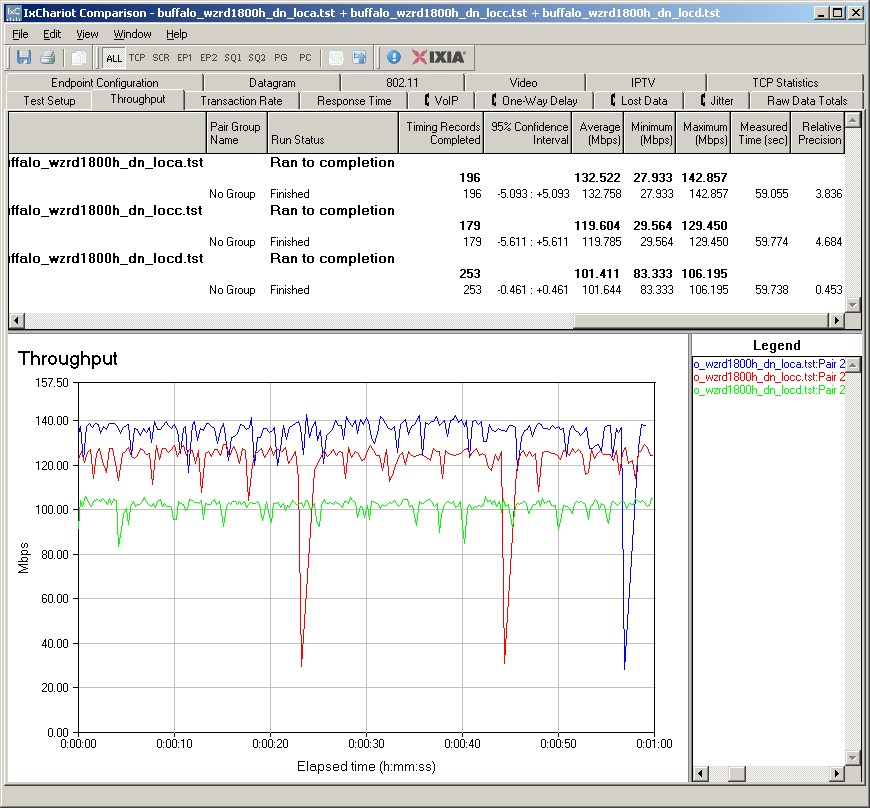
Figure 10: Buffalo WZR-D18008 IxChariot plot summary – 5 GHz, 80 MHz mode, downlink
Speaking of link rate switching, I could see a good deal of it by looking at the D1300 bridge’s Diagnostic page and Windows’ standard Wireless Connection properties. In 802.11n, three-stream 40 MHz mode, I very occasionally saw a full 450 Mbps link rate during the Location A tests. And the rates in all test locations and modes seemed to move around a good deal during testing. Since it is early days for draft 11ac—I expect algorithm tuning is still underway and will be for awhile.
Here are links to the other plots for your reference.
Mixed Clients
When you run more than one client on a single radio, the radio’s total available bandwidth is shared among the clients. When those clients support different wireless standards with differing maximum link rates, that sharing gets interesting.
Figure 11 shows how bandwidth sharing went when both the Buffalo WLI-H4-D1300 bridge and an Intel Centrino Ultimate-N 6300 three-stream N client were both associated with the D1800H’s 5 GHz radio. The D1800H was set to 11ac/n/a 1300 Mbps Mode (80 MHz) on Channel 36, with both clients using a WPA2/AES secured connection. Note that the Y axis doesn’t go to 0 so that you can better see plot detail.
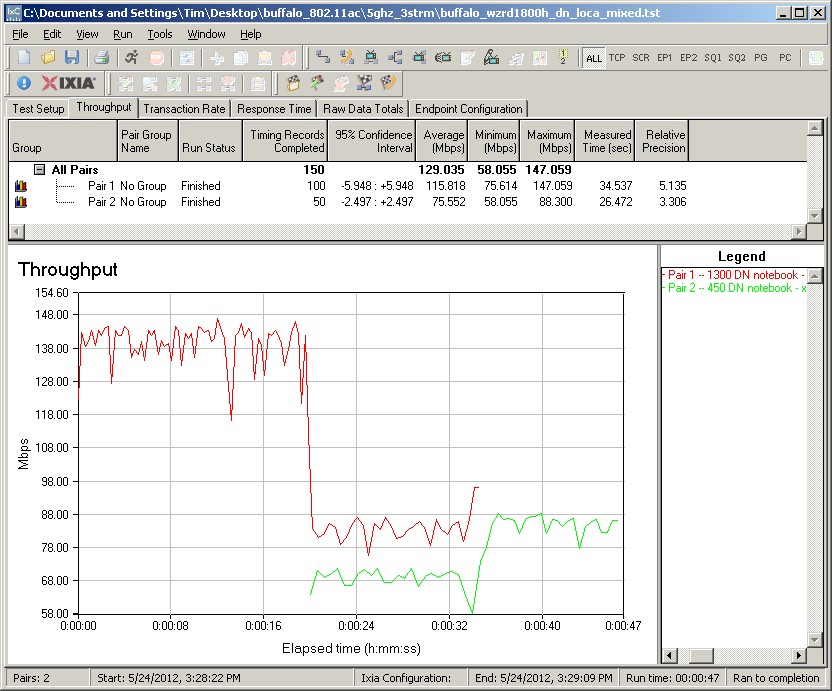
Figure 11: Mixed draft 11ac and 3 stream N clients
The draft 11ac pair starts first at about 138 Mbps. When the three-stream pair kicks in at 20 seconds, total bandwidth actually increases to (if my eyeballing is correct) around 150 Mbps (~ 83 Mbps for draft 11ac + 68 Mbps for 3 stream N). But the draft 11ac pair gives up 40% of its bandwidth to the cause. When the draft 11ac pair ends around 35 seconds in, the 3 stream N pair’s throughput increases to an eyeballed average of around 85 Mbps, only about a 25% increase.
So in a mixed environment, a "1300 Mbps" draft 11ac client is clearly going to take the biggest throughput hit. Therefore, if you have a busy N wireless LAN and especially one with a lot of streaming and large file transfers, the "add, don’t replace" rule for the G-to-N transition will certainly apply for the N to AC transition.
Stress Test
I like to run a simple "stress test" on new router architectures to see how wired routing and wireless throughput interact. I set up a test with four IxChariot simultaneous tests:
- LAN to WAN wired routing throughput
- WAN to LAN wired routing throughput
- Draft 802.11ac wireless downlink
- Three stream N, 2.4 GHz wireless downlink
This set of tests simultaneously ran the wired routing, 2.4 GHz radio and 5 GHz radio as fast as their bits would flow. In Figure 12, the routing tests start first, followed by both radios at the 10 second mark. It’s hard to tell from the single test below, but after running many versions of the test, I can say that the 5 GHz radio’s throughput when in 11ac mode is definitely affected by routing traffic. The effect is less pronounced than I’ve seen in other routers, however.
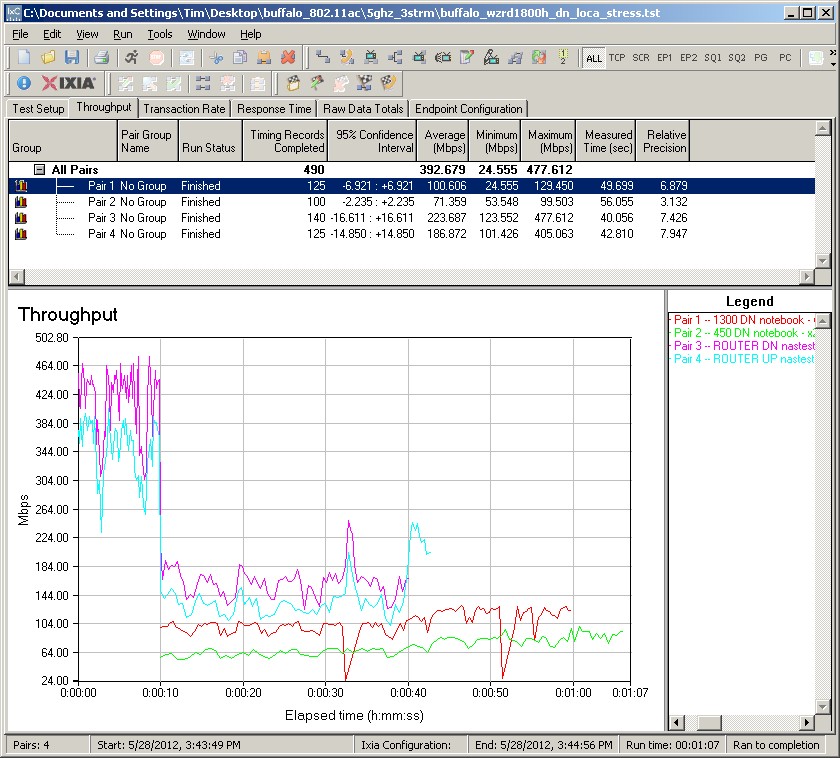
Figure 12: Buffalo WZR-D1800H stress test
This test usually shows some interaction between the routing and radio portions of a router and the D1800H is no exception. Figure 12 shows that routing throughput drops precipitously as soon as wireless activity starts. We’ve seen this in other routers, like the ASUS RT-N66U. Figure 13 shows a plot of the ASUS’ stress test, where you can easily see wireless throughput drop when the router, even limited to 100 Mbps, kicks in at the 40 second mark.
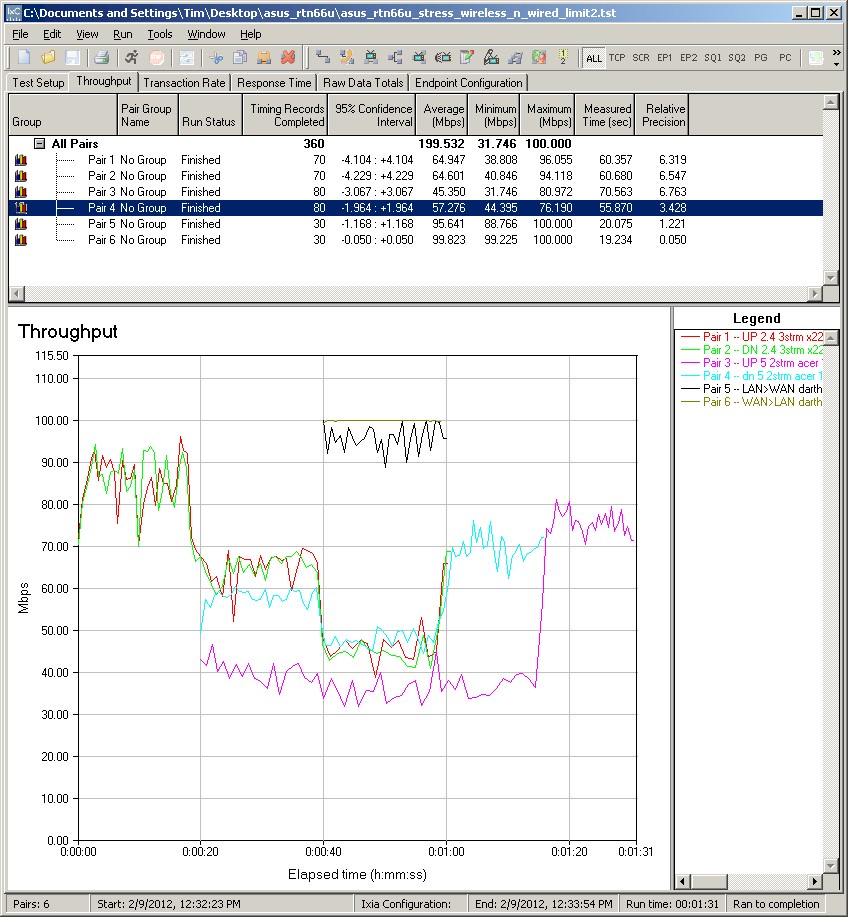
Figure 13: ASUS RT-N66U wireless and wired stress test
I tried to duplicate the ASUS’ test. But the Buffalo’s wireless throughput just wasn’t steady enough for me to try to increase the wireless loading by running simultaneous up/down tests on both radios. So I had to settle for using single downlink test for the router and both radios to get the clearer plot in Figure 14.
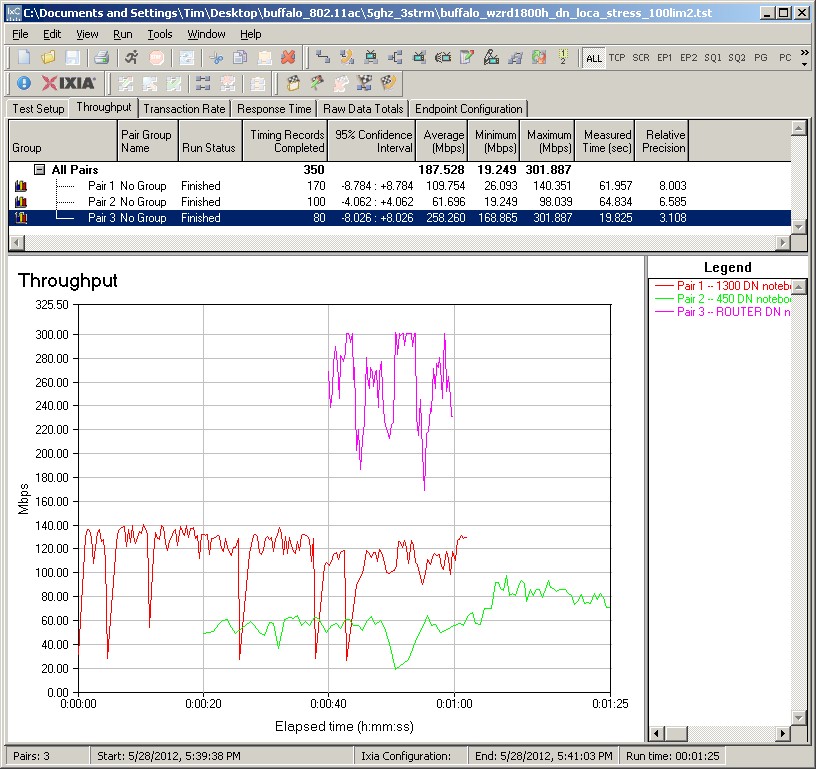
Figure 14: Buffalo WZR-D1800H stress test – take 2
In this test, I started the 11ac wireless pair first, then the 3 stream N pair on the 2.4 GHz radio 20 seconds in and finally the routing downlink at 40 seconds. Although the 11ac pair throughput bounces around a bit, you can see a slight throughput decrease when the 2.4 GHz radio kicks in. But there is a more easily detected change when the router starts. To keep the vertical axis compact, I limited the max routing throughput to 300 Mbps and also ran a test with it cranked down even lower to 100 Mbps. In either case, the 5 GHz radio throughput was more negatively affected as soon as routing activity started.
You can see the 2.4 GHz plot rise shortly after one minute and both routing and 5 GHz radio activity start. But in other test runs, the increase was lower than you see in Figure 14.
At any rate, there is interaction between the routing and wireless portions of the D1800H, particularly when operating at draft 11ac speeds. There is some radio-to-radio interaction, too. But the amount is much less than the router-to-radio effect.
Closing Thoughts
There is both good and bad news for those itching to run out and buy a draft 11ac router. The good is that, when paired with its WLI-H4-D1300 partner, the WZR-D1800H can produce almost 450 Mbps of aggregate throughput when handling multiple clients. Even better, though, its that the pair can produce around 100 Mbps of usable throughput at my weakest signal test point for a single test client!
This is more bandwidth than I’ve ever seen available from any other 5 GHz wireless product and may even be capable of sustaining a trouble-free 1080p HD video stream. The catch, however, are the large and long throughput dropouts that I saw in many of my tests. So unless your HD streaming player has some decent buffering, you may still be out of luck! I will have to give HD streaming a shot in the coming weeks, after I clear out some of my review backlog.
The bad news is that you’ll need to spend almost $400 to run the above experiment. And the more practical bad news is that the WZR-D1800H isn’t a particularly good simultaneous dual-band three-stream N ("N900") router. If that is what you’re looking for, you may be better off spending about the same price and picking up an ASUS RT-N66U.
 Buy AirStation AC1300 / N900 Gigabit Dual Band Wireless Router from Amazon
Buy AirStation AC1300 / N900 Gigabit Dual Band Wireless Router from Amazon
